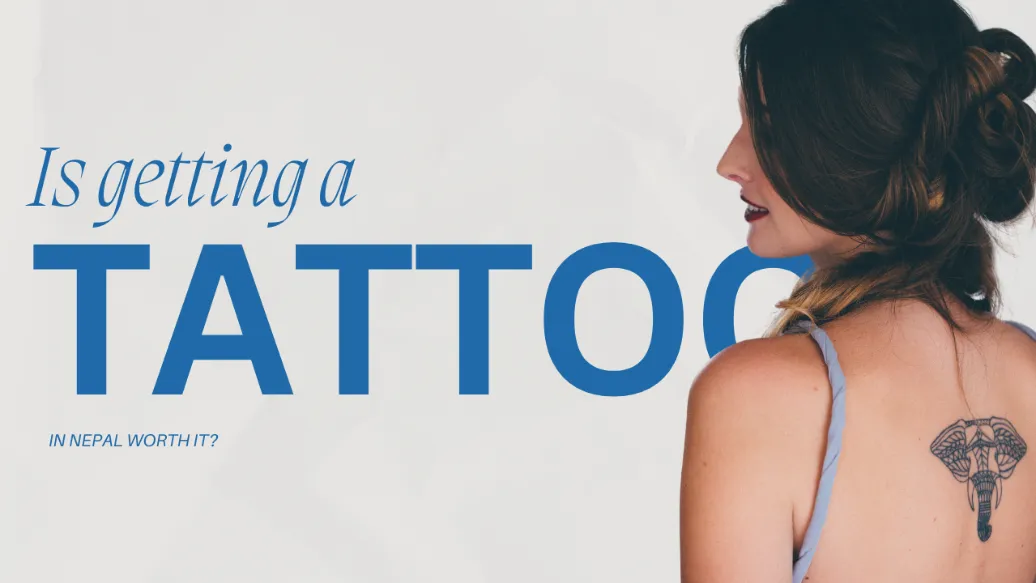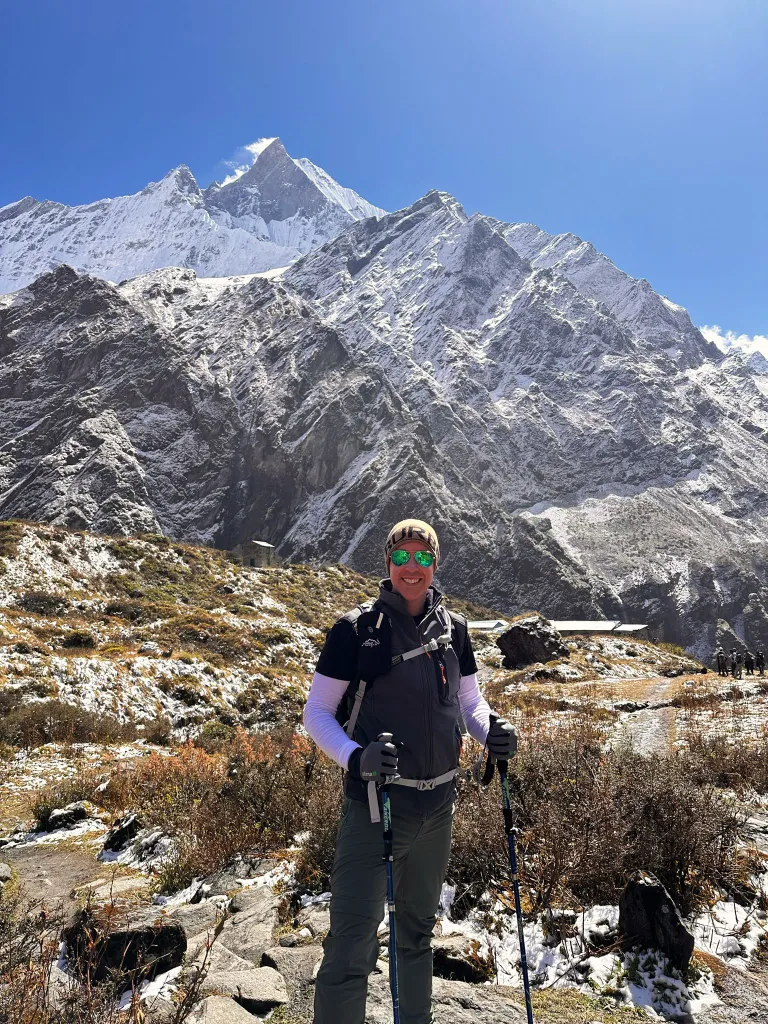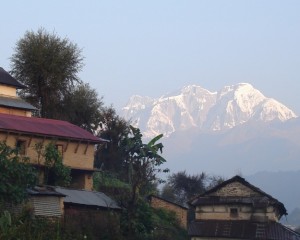Things Needed to Trek to Himalayas of Nepal
Are you about to Trek the Himalayas of Nepal? Trekking to the Himalayas requires good preparation physically and mentally. You should be prepared physically, make yourself fit for a long walk, and exercise regularly to help grow your strength. You must make sure that you pack all the things that are needed to trek to the Himalayas in Nepal.
Trekking In the Himalayas has been practiced for a long time. With the activity, there comes some basic knowledge you must get in mind. You must be well prepared about the things and gears you will take on your journey in the Himalayas so that you could prevent multiple problems in the future.
Trekking is an easy and enjoyable activity that doesn’t require a massive superpower to enjoy and complete, but being prepared beforehand is a must thing to do. Going in-depth, trekking requires some important accessories and information to take the needed things in their backpack. Most trekkers don’t have a depth of knowledge or idea about the things they should include in their backpacks.
Often, Trekkers have seen overspending on gears due to the lack of many ideas about it. Mostly, they prefer to buy the items from the shops located in Kathmandu and Pokhara, which don’t guide them much. So, you can overlook the products and equipment listed which may help you to backpack for the things you will need during the trek.

The Most Essentials
1. Backpacks
A Backpack that can accumulate about 40-50 liters is the most essential thing in the trek. A backpack with comfortable hip and shoulder support is needed. You must also check for small pockets. A backpack with multiple mini pockets works best. The backpack must be chosen wisely, looking at its quality and product as that will be together with you carrying all your equipment for a long trek.
2. Trekking Shoes
One of the most essential things in the trek is your Trekking shoes. You must take sturdy shoes with a good grip and ankle support that can also handle snow. As your trek will be to the Himalayas, the path to the high-altitude destination is not the usual path, hence, shoes are a must for an easier trek.
For the trek, you don’t require highly branded and expensive trekking shows, but the one that will go through the difficult paths giving ease to your legs will be okay. You can look out for the popular brands in Nepal that have been used and reviewed by multiple trekkers.
Sports Shoes or Trekking Shoes?
Sports Shoes are not highly referred to for the Himalayan Trek. As the paths to the Himalayas may be slippery for which your shoes should have a proper grip. Trekking shoes have the best grip, studs, and ankle supports than sports shoes. So, Trekking Shoes for the Himalayan Trek.
3. Clothing
One of the common obstacles in every trek is cold. Although you will trek to the Himalayas in the moderate season, the climate at the higher altitude may change within hours. There is a sudden change in the weather which means you must be well prepared beforehand about the clothes to pack for the trek.
a. T-shirts
One of the most needed clothes is a T-shirt. Isn’t the base layer the most protective layer? You are recommended to pack a couple of full sleeves collared T-shirts among which one or two should be thick. The sun during the trek may give you a deep sunburnt, for which you must carry full sleeve clothes. The long walk may give you a healthy sweat. You can pack some dry-full-sleeved T-shirts which will be helping both for making you warm and absorbing the sweat.
b. Jackets
Jackets are a needed product in the Himalayas. You will need a padded jacket that could resist wind and cold. The climate in the Himalayas can't be certain. You must also pack some warm sweaters with your jacket. A down or a quality feather jacket handles the purpose but it is not a must. A warm padded jacket will do its best.
c. Trek Pants
Trek pants are a needy option for the Himalayas. Trek Pants are available with zipper cut-offs at the thighs which makes your walking comfortable. Also, you may face multiple small showers of rain during the trail. The dry-trek pants will be best during these situations. For the backup to your trek pants, you could use other comfortable pants to keep you warm.
d. Winter Inners
Winter Inners keeping you warm must be taken during the trek. You can carry thin winter thermals which will help you keep yourself warm and comfortably walk during the trek. Facing the cold and walking is a difficult task to do. So keeping yourself warm is very important.
4. Sunglasses and Cap
The UV rays during your trek are directed toward you. As per the experts, direct contact with the sunlight in snow may cause snow blindness. Snow blindness can be prevented by avoiding contact with the sunlight through the snow. This gives you the need for proper sunglasses preferred to be polarized. If you are a contact lens user, it’s the same for you. You should use your regular contact lens with sunglasses.
With sunglasses, you should also carry a sun cap, and a regular cap to ensure your face is also protected from the sun. Using a sun cap, you can prevent headaches, dehydration, and sun strokes.
5. Trekking Pole
Trekking Poles are used to get balance and comfort during the trek. The trek to the Himalayas doesn’t have an easy path. The trails may have a steep path, and be slippery somewhere. Taking a Trekking Pole will help you go through the trails much easier than without the pole.
Do I Need Two Trekking Poles?
Some trekkers prefer to take a single whereas some take two. The two poles help to balance and stabilize easily during the trails, hence, two poles are preferred but a familiar person can trek easily with a single pole.
6. Rain Coats
Does carrying a weighty backpack and an umbrella during the Himalayan Trek sound better? No, not only hearing but it will be difficult during imagining too. Carrying a Rain Coat makes the task much easier as a raincoat will only be an outer layer protecting you from the rain without adding any weight as an umbrella.
With a rain cover yourself, don’t forget to carry a rain cover for your backpack.
7. Sleeping Bags
A sleeping bag resistant to -15 degrees Celsius weather should be carried during the trek. The nights in the Himalayas are much colder than the day. The temperature keeps on decreasing with the nights going on. Despite the multiple places for accommodation available on the trek, a sleeping bag is essential.
8. Hand gloves and socks
Keeping a sports sock is a must but with the sports socks, don’t forget to keep a pair of warm woolen socks. Warm-woolen socks during the trek are a needy piece of equipment to keep you warm after a long walk. You can preferably use your warm woolen socks in your trek if you are comfy.
Trekking during the snowy season may require some warm hand gloves. You can't walk through the trails keeping your hands in your pocket, Can you? Preparing beforehand and packing hand gloves will warm your hands during the trek.
9. Headlight or Headlamp
Like carrying an umbrella in your hand, carrying a light in your hand sounds similar on the trek. Your hands must be free or utilized to work on other tasks making your trek easier. Carrying a headlight or headlamp eases your trekking stay on the treks. It may also be used in your trails sometimes.
10. Water Bottles
You must not dehydrate during your trek. Throughout your trek, you should drink water for a certain interval of time, making sure you are not dehydrating and tired. Water may not be available in most places easily on the trek. Hence, a water bottle will make it much easier.
Other Requirements
1. First Aid Medical Kit
First Aid is one of the required parts of your backpack. You must carry the possibly needed medicines during the trek. Sometimes sudden problems may arise, so for health benefits, needed medicines can be taken. Some of you may face problems in sleep, problems due to cold or altitude, hence, taking some kits and medicines beforehand is beneficial.
2. Extra Batteries
Getting extra batteries for your equipment is not a harm. We never know what may happen during the trekking days, so we must be prepared that we are ready if our trek elongates for certain days.
3. Sunscreens
It is really important to protect your skin with your body. The sunlight in the Himalayas is very dangerous for our skin. The UV rays may affect us unwantedly which may cause multiple problems in the future leading to severe skin diseases. So take sunscreen with a high SPF.
4. Plastic bags
Being a wise human is very much necessary. Hence, making Mother Earth clean is as important as our other personal needs. Throwing away our waste in the mountain areas and trails has caused many problems in our society lately. Hence, take some plastic bags with you and prevent unwanted wastage in nature.
5. Gaiters
Gaiters are an essential need that can be taken if we have knee or leg problems. Gaiters are the special clothing that is used for the protection of ankles or part of the leg below the knee. We can protect our legs from twisting and swelling due to cold and other problems in our legs.
Mandatory Documents for the Trek
Besides the equipment and gear, you should also care about the important documents that you will take on your trek. Some of the needy documents are listed.
1. Your Identity Card
You will need a permit in most of the places in the Himalayas. For the permit, you must clearly show your identity if you are a Nepalese or a Tourist. If you don't have your identity card, you may face some problems with the permit as per the government rules. The photocopy in case the original is not present also works.
2. Medical Id and Certificate
For the expedition and high climbing, you should first ensure that you are healthy and physically fit. The official medical report or certificate stating you are ready for the climb as per your health condition should be with you on the trek.
3. Disclaimer Certificate
The government needs to provide permission for the trek, in simple terms, the permit. Hence, once you get the permit, the documents that state you have gained the permit must be present with you.
4. Travel Insurance Docs
Sometimes, due to hard luck, you or any member of your group may face a problem during the trek. There may be the need to be taken somewhere for medical help, or some helicopter help to transport you. In such conditions, your travel insurance documents will be a huge help.
Other preparation for the Trek
You will have to look out for multiple aspects of the trek. The most important aspect of the trek is physical health. You should be physically healthy and sound to complete your trek with lots of enthusiasm and excitement.
Physical Preparations
- Training
Before the actual trek begins, you can opt for shorter treks, and go for short treks and hikes which will help you train for longer treks. The training will help you acquire more knowledge about the trek and be further prepared for the trek.
2. Exercise
A physically active person can more easily walk than a person who is not physically active. The person who exercises goes on walks and is active has more strength, energy, and power for the walk. He will feel the trails much easier.
3. Immunization
There are not any critics of immunization for trekking in Nepal but being immunized for typhoid and hepatitis is referred to by physicians. Nepal may have some mosquito-borne diseases like Dengue, hence, immunization for the disease is for self-safety. You may also get immunized for pneumonia to prevent problems due to altitude in the future.
Where Can I Buy My Trekking Gears In Nepal?
There are multiple places in Nepal where you will find trekking gear. Mostly, In Thamel, Kathmandu, you will find the mountaineering gears shops, where you will get most of all the products. After Kathmandu, Pokhara is also one of the named places for trekking gear. For buying trekking gear, you must have a better knowledge of which product will be the best. The price range of the product differs with the brand and shops. You can choose the gears and products with better research.
Conclusion
These are some of the essential gear for your trek. You may pack other needy equipment for your treks apart from these. Feel comfortable packing your bag with the needed things that you will have to use for the near two weeks or more. Check out our Nepal Vision Trek blog for the necessary items needed for your backpack.






